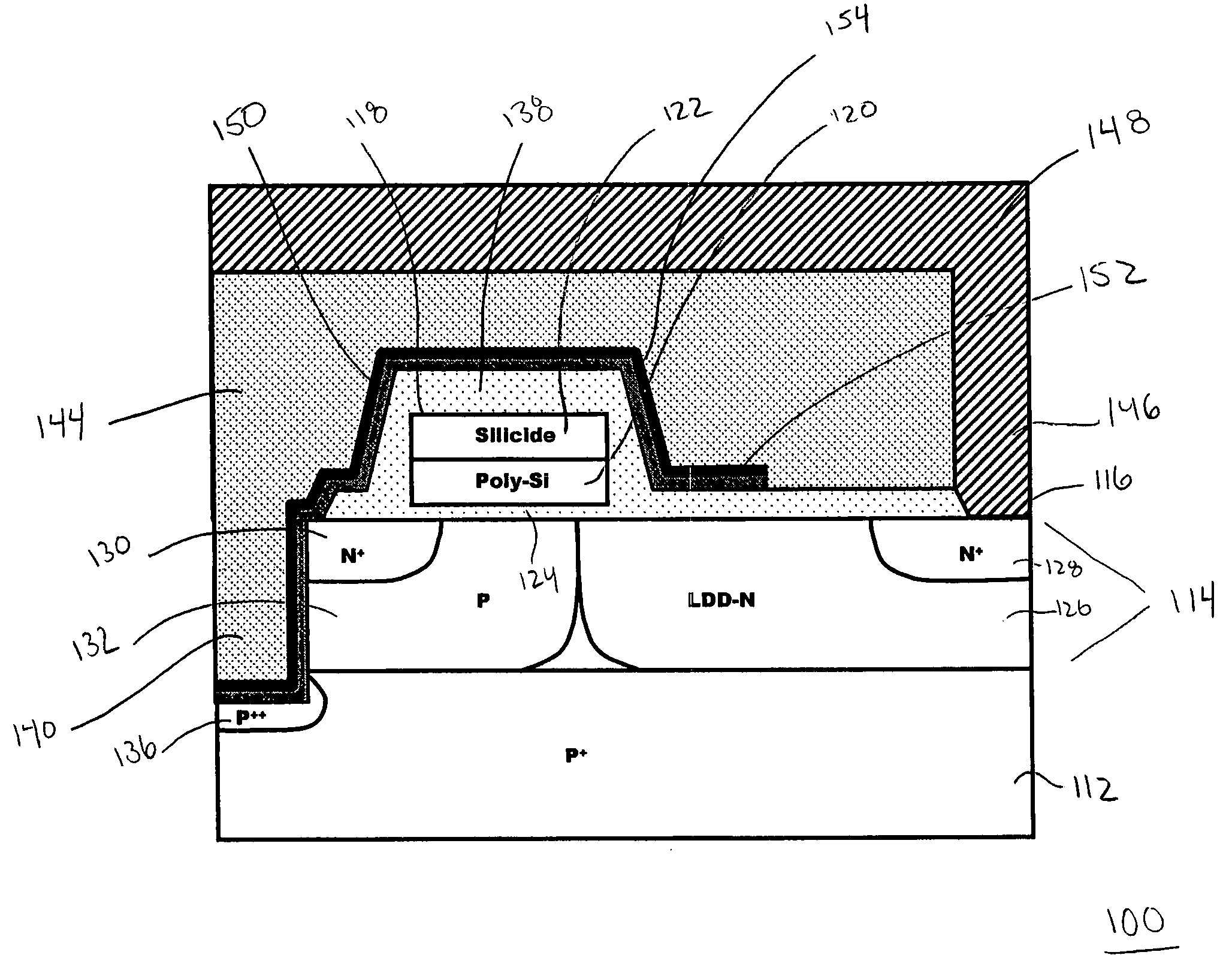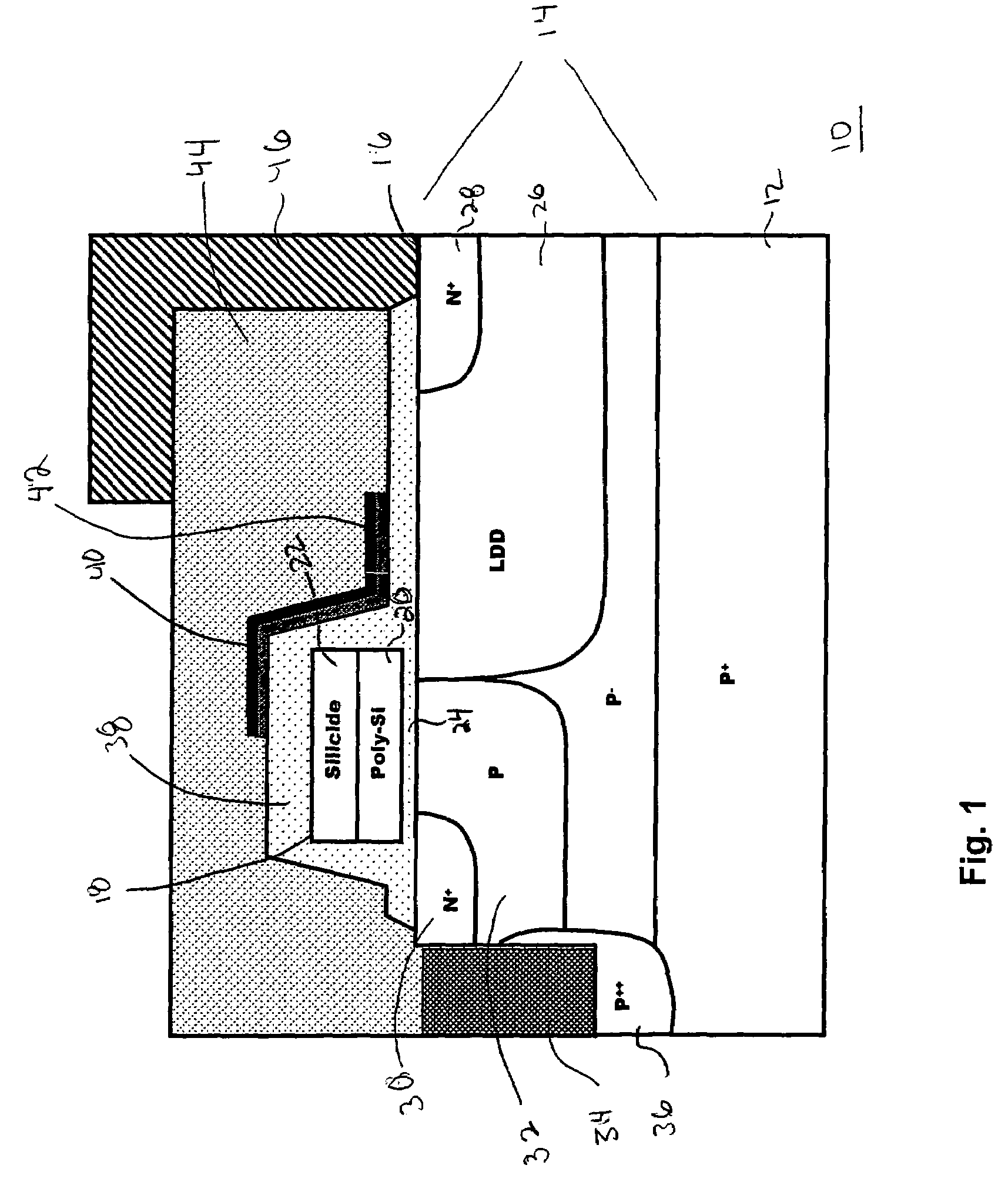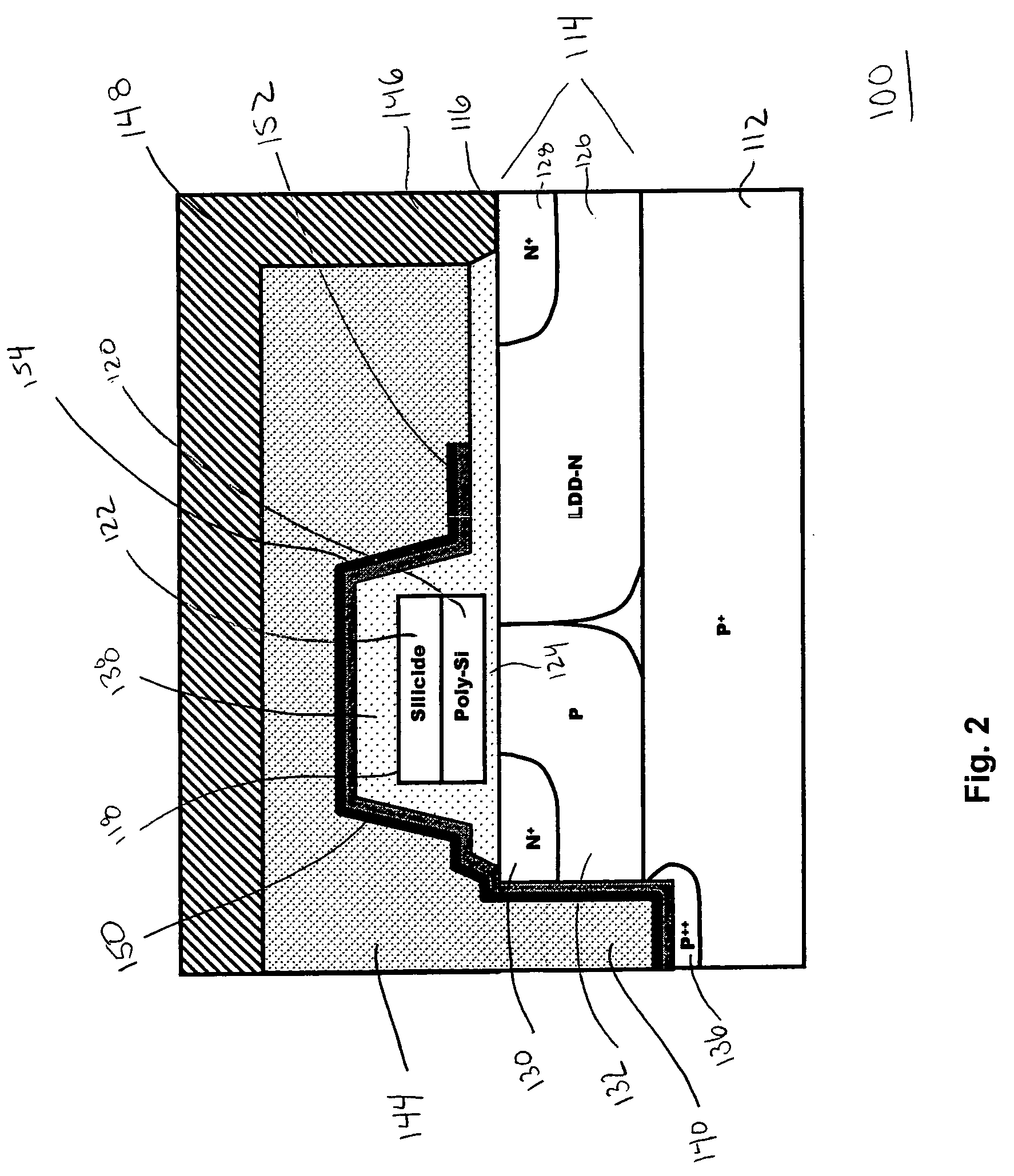Power LDMOS transistor
a technology of mosfet and current handling capability, which is applied in the direction of transistors, semiconductor devices, electrical equipment, etc., can solve the problems of limiting the current handling capability of the transistor, difficult and often times more expensive design of the mosfet, and inability to meet the needs of power management applications, etc., to achieve the effect of reducing the pitch of the device cell design, reducing the cost of current handling, and reducing the cost of the transistor
- Summary
- Abstract
- Description
- Claims
- Application Information
AI Technical Summary
Benefits of technology
Problems solved by technology
Method used
Image
Examples
Embodiment Construction
[0016]As used herein, the following dopant concentrations are distinguished using the following notations:
[0017](a) N++ or P++: dopant concentration>5×1019 atoms / cm3;
[0018](b) N+ or P+: dopant concentration of 1×1018 to 5×1019 atoms / cm3;
[0019](c) N or P: dopant concentration of 5×1016 to 1×1018 atoms / cm3;
[0020](d) N− or P−: dopant concentration of 1×1015 to 5×1016 atoms / cm3;
[0021](e) N−− or P−−: dopant concentration 15 atoms / cm3.
[0022]FIG. 1 is an illustration of a LDMOS transistor device 10, specifically an n-channel device. The transistor structure 10 illustrates different prior art transistor features, such as described in U.S. Pat. No. 6,831,332 to D'Anna et al., and in U.S. Pat. No. 5,252,848 to Adler et al., the entirety of which are hereby incorporated by reference herein and discussed later in more detail. The transistor structure 10 includes a semiconductor substrate 12, which, in the illustrated embodiment, is a highly doped (P+) silicon wafer doped with boron. A source el...
PUM
 Login to View More
Login to View More Abstract
Description
Claims
Application Information
 Login to View More
Login to View More - R&D
- Intellectual Property
- Life Sciences
- Materials
- Tech Scout
- Unparalleled Data Quality
- Higher Quality Content
- 60% Fewer Hallucinations
Browse by: Latest US Patents, China's latest patents, Technical Efficacy Thesaurus, Application Domain, Technology Topic, Popular Technical Reports.
© 2025 PatSnap. All rights reserved.Legal|Privacy policy|Modern Slavery Act Transparency Statement|Sitemap|About US| Contact US: help@patsnap.com



